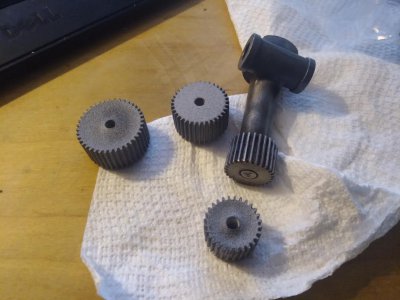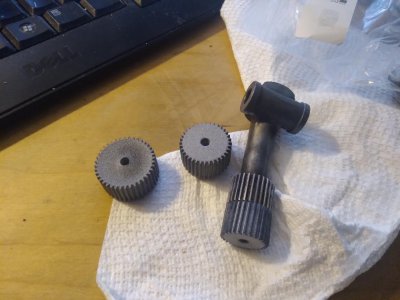- Joined
- Dec 3, 2023
- Messages
- 81
A 28 tooth gear with an o.d. of 19 mm would have a modulus of .633. OTOH, 28 tooth gear with an o.d. of .748" (19 mm) would have a diametral pitch of 40.05. I suspect that the lathe has Imperial gears. If the lathe were offered with an option for a metric lead screw rather than a standard Imperial lead screw. I would suspect the latter is the case.
Regarding CAD generation of gears, they are not necessarily true to form. I know that is the true for my 2012 version of SolidWorks. There is a third party add on which will generate a geometrically accurate gear but it is somewhat cumbersome to use as it requires parametric equations .
From what I have seen, McMaster Carr's 3D gears are geometrically accurate and my approach is to download the model and modify it to meet my needs. Another way to create accurate gear models is to download them from SDP/SI's site and modify them to my need.
So,... it took me a bunch of days reading and researching to figure out what most of this meant. I re-measured the single existing gear that I do have for my thread dial and the module turns out to be closer to .631 with more precise measuring. Since the lead screw isn't "purely metric" because of it's odd diameter size for the given lead screw pitch, there isn't much in the way of preformed gears or cutting tools that I can buy, with the exception of a single tooth slitting cutter.
I thought about making a hob style cutter out of metric trapezoidal rod, but the 2mm pitch rod isn't made in a 12.57mm diameter. If I want to make a spiral hob to cut plastic gears, I have to first make the hob myself. If I make a circular hob then I have to make the complex rotational index for all three different sized gears I want to produce.
I did go to the websites suggested to design the gears, and saved the spec read out. I really didn't want to bother my CAD friend and have him code and print the gears, but I'm curious what they will be like printed versus cut. Needless to say cutting them myself is a elaborate process given that I have to make the cutters to cut the gears.
Thankfully, I had previously done the work to enable reverse chuck rotation on my lathe, so I can always leave the half nuts engaged to keep my place when threading and power back and forth to the start of any threads I make. It sure would be nice to use the half nuts as well,.. but it's a challenge at my experience level to make a hob for the lathe. As a cabinet maker, I feel like I could make a jig for the table saw to cut the gears with the only question being grinding a blade to the tooth profile.
Thanks again for all the comments. It took me a while to learn what some of the issues are with this project. If I get some worthy result, I report back the method and the result...
Last edited by a moderator:



